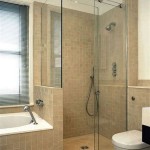Get Rid Of Gnats In Bathroom: A Comprehensive Guide
Gnats in the bathroom are a common and frustrating problem for many homeowners. These tiny, winged insects are attracted to moist environments and decaying organic matter, making the bathroom an ideal breeding ground. While they are generally harmless, their presence is unsightly and can indicate underlying issues like plumbing leaks or poor ventilation. Successfully eliminating gnats requires identifying the specific type of gnat, locating their breeding source, and implementing a combination of cleaning, trapping, and preventative measures.
It is crucial to distinguish between different types of small flies that may be present in the bathroom. Often, what people commonly refer to as "gnats" are actually fruit flies, drain flies, or fungus gnats. Each species has slightly different habits and preferences, influencing the most effective control strategies. Fruit flies are attracted to sugary substances, drain flies thrive in stagnant water and organic sludge found in drains, and fungus gnats infest damp soil and decaying plant matter.
Accurate identification is the first step toward effective gnat control. Fruit flies typically have reddish-brown bodies and are commonly found near fruit bowls or spilled sugary drinks. Drain flies (also known as moth flies) are small, fuzzy insects with moth-like wings, often seen resting on bathroom walls. Fungus gnats are slender, dark-colored insects with long legs and are frequently found near houseplants. Once the specific type of fly is identified, the appropriate elimination strategy can be implemented.
Identifying and Eliminating the Source
The most crucial aspect of gnat control involves identifying and eliminating the breeding source. Gnats don't just appear; they breed in areas where conditions are favorable for their larvae to develop. The bathroom environment often provides these conditions due to moisture and available organic matter.
Drain flies, as their name suggests, breed in drains. The slimy buildup of organic matter inside drains provides a perfect food source for their larvae. Flushing the drain with boiling water might offer temporary relief, but it rarely eliminates the deeper organic material. A more effective solution is to use a drain cleaning enzyme product. These products contain bacteria that break down the organic matter, eliminating the breeding ground for the flies. Follow the product instructions carefully, typically involving pouring the solution into the drain and allowing it to sit overnight.
Inspecting under sinks and around toilets for leaks is essential. Even small, slow leaks can create damp environments that support gnat breeding. Repairing any leaks promptly is crucial not only for gnat control but also for preventing water damage and mold growth. Thoroughly dry any standing water after repairs.
Another potential breeding site is the shower drain. Hair, soap scum, and other organic debris can accumulate in the shower drain, providing a food source for gnat larvae. Regularly cleaning the shower drain with a drain snake or a solution of baking soda and vinegar can help prevent infestations. Pour one cup of baking soda down the drain, followed by one cup of vinegar. Let it fizz for about 30 minutes, then flush with hot water.
If fungus gnats are suspected, inspect any houseplants in or near the bathroom. Overwatering plants can create overly moist soil, which is ideal for fungus gnat larvae. Allow the soil to dry out between waterings. Consider replacing the top layer of soil with fresh, sterile potting mix. Additionally, yellow sticky traps placed near the plants can help capture adult fungus gnats, reducing their numbers and preventing further breeding.
Implementing Trapping Techniques
While eliminating the breeding source is the primary goal, trapping adult gnats can significantly reduce their population and provide immediate relief. Several effective trapping methods can be implemented in the bathroom.
A simple and effective trap can be made using apple cider vinegar. Pour a small amount of apple cider vinegar into a shallow dish or jar. Add a few drops of dish soap. The vinegar attracts the gnats, and the soap breaks the surface tension of the liquid, causing them to drown. Replace the solution every few days or as needed.
Another effective trap involves using a piece of overripe fruit. Place a piece of overripe banana or other fruit in a jar or container. Cover the opening with plastic wrap and poke a few small holes in the plastic wrap. The gnats will be attracted to the fruit and enter the jar, but they will be unable to escape. Dispose of the trap after a few days.
Commercial gnat traps are also available and can be purchased at most hardware stores or online retailers. These traps often use a combination of light and a sticky surface to attract and capture gnats. Follow the manufacturer's instructions for placement and maintenance.
Sticky flypaper is another option for trapping adult gnats. Hang strips of flypaper near areas where gnats are frequently seen. The gnats will be attracted to the paper and become stuck. Replace the flypaper regularly as it becomes covered with insects.
It is essential to place traps strategically in areas where gnats are most active. This includes near drains, sinks, toilets, and houseplants. Monitor the traps regularly and replace them as needed to maintain their effectiveness.
Preventative Measures to Minimize Infestation
Preventing future gnat infestations is just as important as eliminating existing ones. Implementing a few simple preventative measures can significantly reduce the likelihood of gnats returning to the bathroom.
Maintaining good ventilation is crucial. Ensure that the bathroom is adequately ventilated by using the exhaust fan during and after showers and baths. This helps to reduce humidity levels, making the environment less attractive to gnats. If the bathroom does not have an exhaust fan, consider installing one.
Regularly clean drains to prevent organic matter from accumulating. Use a drain snake or a solution of baking soda and vinegar to remove hair, soap scum, and other debris. Avoid pouring grease or food scraps down the drain, as this can contribute to organic buildup.
Wipe up any spills or standing water promptly. Gnats are attracted to moisture, so it is important to keep surfaces dry. Pay particular attention to areas around sinks, toilets, and showers.
Avoid overwatering houseplants. Allow the soil to dry out between waterings to prevent fungus gnat infestations. Consider using a well-draining potting mix and ensuring that pots have adequate drainage holes.
Inspect fruit and vegetables for signs of decay before bringing them into the bathroom. Fruit flies are attracted to overripe fruit, so it is important to store fruit properly or dispose of it promptly.
Consider using a screen on windows and doors to prevent gnats from entering the bathroom from outside. This is particularly important during warmer months when gnat populations are typically higher.
Regularly clean and disinfect the bathroom to remove any potential food sources for gnats. Pay particular attention to areas that are prone to moisture, such as the shower, sink, and toilet.
By combining these preventative measures with consistent cleaning and monitoring, it is possible to minimize the risk of gnat infestations and maintain a gnat-free bathroom environment.
How To Get Rid Of Gnats Drain Flies Fruit And Fungus

Fruit Flies In The Bathroom Get Rid Of Them Michael S Plumbing Orlando

How To Get Rid Of Drain Flies 6 Expert Tips Truly Blog

Magic Salt How To Get Rid Of Drain Flies Home Remedy

How To Get Rid Of Drain Flies 6 Expert Tips Truly Blog

How To Get Rid Of Drain Flies Rt Olson Plumbing

How To Get Rid Of Drain Flies In Shower Kitchen Or Bathroom

The Ultimate Guide To Getting Rid Of Drain Flies

How To Get Rid Of Drain Flies Moth And Prevent An Infestation Pest Defence

5 Easy Ways To Get Rid Of Drain Flies Fast







